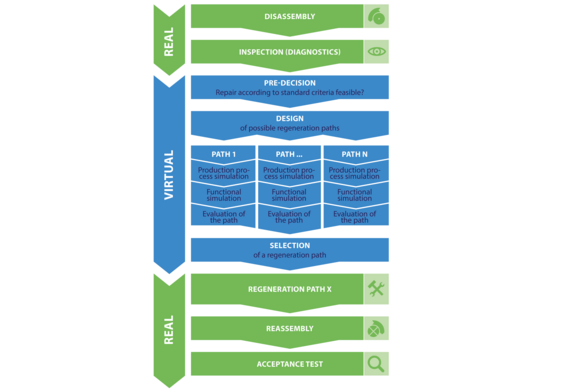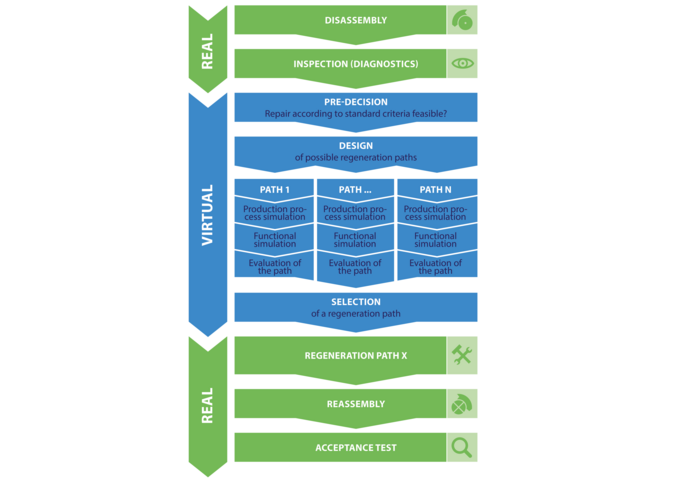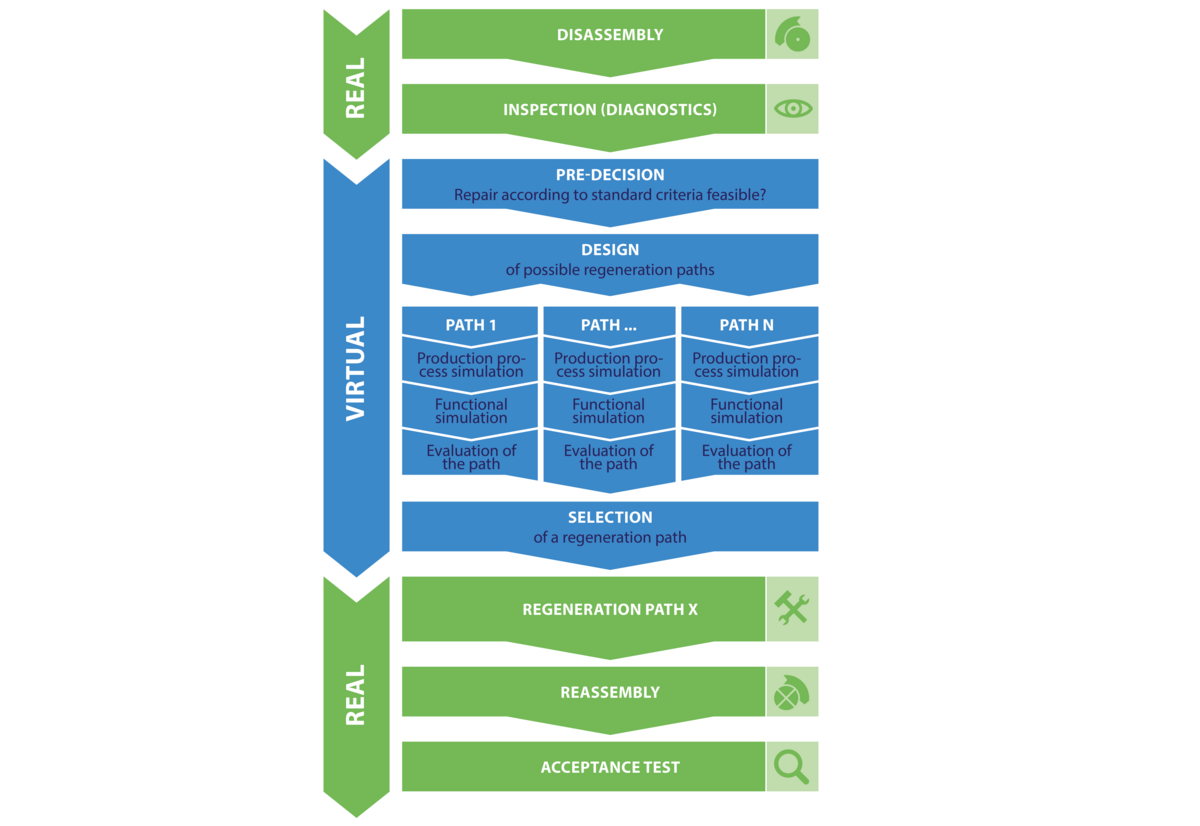Motivation
The maintenance and servicing of capital goods such as aircraft engines, wind turbines or rail vehicles causes a considerable proportion of the operating costs. To reduce this share and save expensive resources, maintenance processes and repair procedures need to be made more efficient. In the regeneration processes customary today, skilled workers carry out maintenance work and repairs on the basis of prescribed guidelines. The individual experience plays an essential role, which u.U. can lead to poor reproducibility and dispersion of repair results.
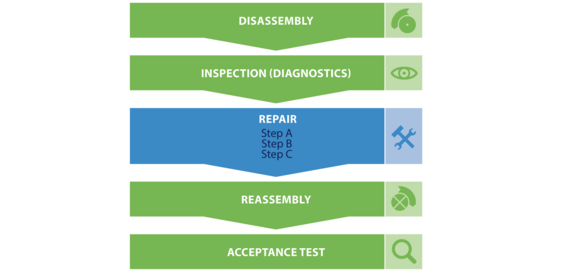
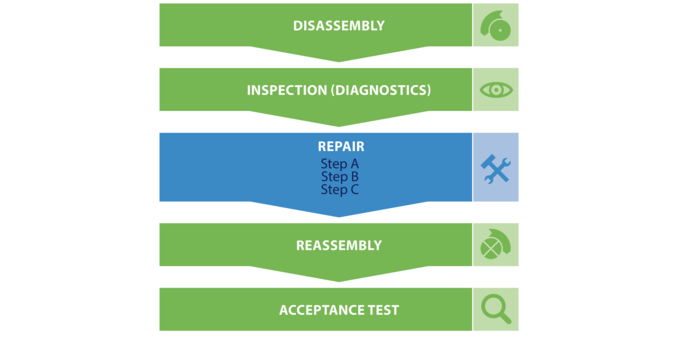
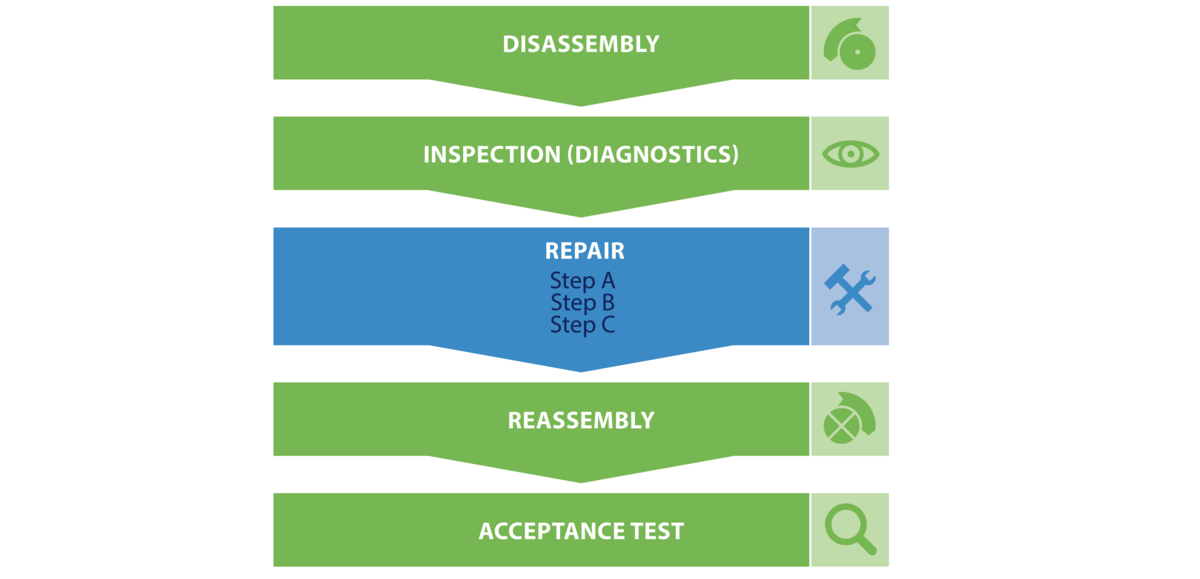
Objectives
The aim of the CRC 871 is to maintain and, if possible, improve the functionality of complex plants and machines. The main objectives of the SFB 871 can be summarized as follows from the special requirements of regeneration for model-based product development and production technology:
- Early recognition of the components to be regenerated and the possible regeneration steps
- Continuous consideration of successive findings in the planning of the ongoing regeneration process
- Improved processes of regeneration (regeneration steps) and their linking to regeneration paths
- Model-based prediction of the functional properties of complex capital goods and production-related expenses
- Based on the model-based predictions, rule-based decisions about the regeneration steps to be performed maximize the benefit for the customer
- Integration of the model-based prediction of production-related expenses and functional benefits at the level of the entire capital goods or the entire regeneration process.
Approach of the CRC
To achieve these goals, the SFB 871 at Leibniz Universität Hannover is developing the scientific basis for an innovative approach: the example of aircraft engines is used to develop a combined virtual and real repair process. This novel approach uses classic methods formerly reserved for product and manufacturing development and transfers them to maintenance.
Before selecting a regeneration path and the subsequent repair, in a virtual process with the aid of a digital twin for all regeneration paths, the production-technical effort and the functional benefit shall be evaluated, so that the decision for the most efficient regeneration path can be derived from this assessment based on rules. The selection of the most efficient regeneration path depends on the customer business model and may differ from customer to customer in this respect. The new process flow is shown in the following graphic.
